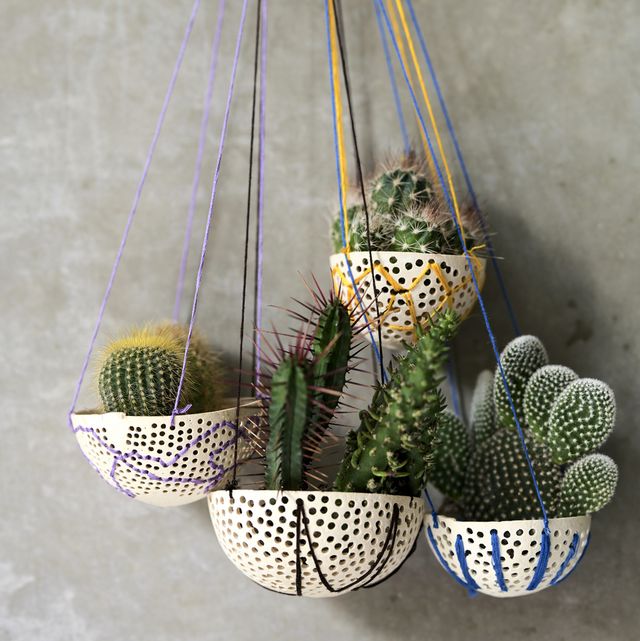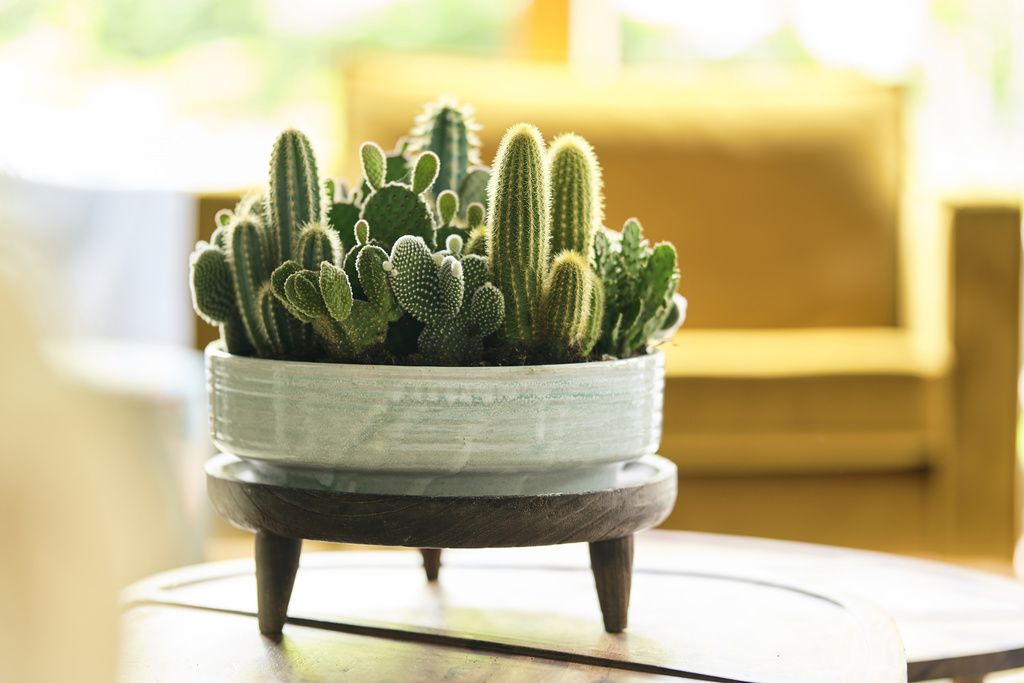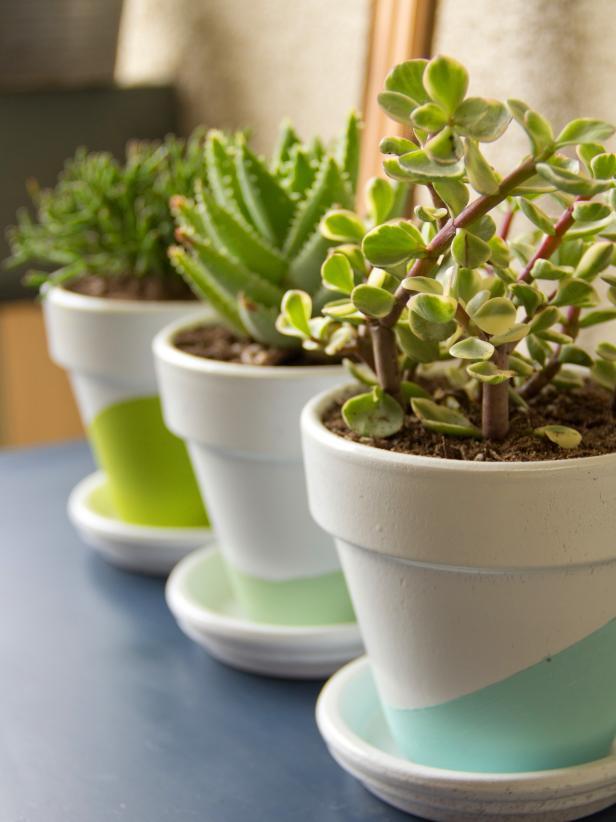We occasionally recommend products we love and might be paid a share of the sale.
Cactus plants are one of the widely chosen plant varieties to start your indoor gardening initiative. Moreover, cactus can make wonderful houseplants as they need the least maintenance and can withstand temperature fluctuations, unlike other plant species.
If you are an amateur gardener starting with growing greens inside the house, then cactus is the best option for you. They can light up the indoor space and can add to the aesthetic value of the house. Moreover, there are a variety of indoor cactus plants from which you can choose and add to your interior home décor. It should be noted here that all types of cactus plants originate from the plant family known as Cactaceae.

Out of the huge list of cactus species, there are two specific species, which can be tamed as houseplants. These are known as desert and forest cacti. The desert cacti are the traditional cactus plant, which is covered with spines or hair in the form of balls or paddles. On the other hand, forest cacti have their origin in tropical and sub-tropical regions.
One of the most popular house-cactus choices is the Christmas cactus, which has originated from Brazil and can bloom in a variety of colors like pink, purple, red, and yellow. Both of the varieties of cactus, forest, and desert have a slow growth speed and result in remarkable blooms. If you have decided to grow cactus plants indoors, then go through this article to know about some of the basic growth factors and pointers.
Choosing the right kind of Cacti
Before starting with the indoor plantation of cacti, it is essential to choose between a forest and a desert cactus. Let us look at some of the noticeable features of both categories for making an informed choice.
- Desert cactus plants are uniquely beautiful with the most visually appealing flowers.
- Desert cacti can be grown with much ease, as they are one of the strongest and sturdiest houseplants. They can withstand harsh and extreme temperatures as well as rapid temperature fluctuations.
- Some species of the desert cacti might take three to four years to reach the flowering stage. This is because succulents take time to bloom. Some desert cacti might require intense light during winter or for blooming.
- On the other hand, forest cacti are the best options for hanging plants.
- If you are looking for unique interior décor, then you should go for forest cacti, which can brighten up the room.
- Moreover, the forest cacti also can result in stunning flowers of a variety of colors like lilac or pink.
Taking Care of Your Cacti
It is essential to grow the cacti in the right kind of environment, which is conducive to its growth. A few factors have to be considered for such an outcome. Let us look at the fundamental factors to be scrutinized for taking care of the indoor cacti.
Light
Light is an essential factor for the growth of any kind of plant. Let us look at some important pointers regarding the light required by the indoor cactus.
- If you are planning to have desert cacti, then it is crucial to remember that these plants require direct bright light, especially during winter.
- However, during the summer, putting the plant directly out in the scorching heat would damage it if has not hardened yet.
- On the other hand, the forest cacti prefer bright indirect light.
- You can move the plant outdoor in summer. However, keep the plant in a shaded cool area away from the direct heat of the sun.
Soil
The soil for the cactus plant should be treated in some ways especially for the desert cactus. Let us look at some important pointers regarding the soil required by the indoor cactus.
- The soil for the desert cactus should be a cacti soil mix, which has a good drainage capacity.
- If such a soil mix is not available, then the normal potting soil mixed with elements like sand or perlite should be used. This will enhance the drainage capacity of the soil and lead to improved aeration.
- Typically, the cactus grows very slowly. Therefore, they would rarely need to be repotted.
- For forest cacti, you can use a normal potting mix. Moreover, the plant should be repotted at the start of the vegetative stage.
Watering Schedules
Cactus is succulent. Therefore, there are certain ways in which the plant should be watered. Let us look at some important pointers regarding the water required by the indoor cactus.
- In the case of desert cacti, the plant grows during the spring and summer seasons. It might also bloom during these seasons. During such a phase, it is recommended to water the plant once the topsoil or the compost starts drying.
- It is crucial to remember that the plant should be watered from top to bottom during the watering schedules.
- During the winter season, cease the watering schedules. Water the plant only when it begins to shrivel in winter.
- One of the most common occurrences with the desert cactus plant is that they are often subjected to overwatering schedules, which might lead to root rot or rotting of the growing tips of the plant.
- In case the rot has advanced to other parts of the plant, then it has to be propagated from plant cuttings.
- Forest cactus plants require normal watering schedules as other houseplants during the summer season.
- During the winter, water the plant when the topmost layer of the soil has dried up.
- Both forest and desert cactus are succulents and do not need heavy watering schedules. It is crucial to remember that too much water will lead to the rotting of the plant roots.

Temperature and Humidity
Temperature is another essential factor that contributes significantly to the growth and bloom of any plant. This is because plants cannot regulate their body temperatures. Therefore, it is essential to maintain the required temperature and humidity around the plants. Let us look at some important pointers regarding the temperature and humidity required by the indoor cactus.
- During the vegetative or blooming stage, the desert cacti prefer warm and dry temperatures ranging within 70 to 80 degrees Fahrenheit.
- During the winter, they go through their resting period and require a temperature below 55 degrees Fahrenheit.
- The plants should also be protected from extremely cold winds as this could stunt their growth.
- During the vegetative or blooming stage, the forest cactus requires temperatures ranging within 55 to 70 degrees Fahrenheit.
- During the resting season, they prefer temperatures not more than 50 degrees Fahrenheit.
Fertilizer
In the case of a desert cactus, you can always make use of a cacti fertilizer especially during the vegetative or the blooming stage. Standard fertilizers might not work efficiently in the case of desert cacti. Therefore, it is recommended to use a specialized cacti fertilizer. On the other hand, if you have a forest cactus plant, then you make use of a standard fertilizer. However, it is crucial to reduce the amount of fertilizer used during the growing stage.
How to repot the cacti with care?
Cacti is a succulent that might need repotting when the plant is growing or needs fresh soil. It is crucial to remember here that most cacti are root-bound plants and will be required to be repotted rarely. Let us look at the steps of repotting indoor cactus plants.

- Before beginning with repotting of both the desert and forest cacti, it is important to put on a pair of protective gloves so that you do not get injured.
- Remove the cactus from the container.
- Take a clean towel to loosen up the roots.
- Fill the bottom of the new pot with a cacti soil mix that has a good drainage quality for desert cacti.
- For forest cacti, a normal potting mix shall be used.
- Keep the cactus in the new setting and put the soil mix around the sides.
- Tighten up the soil by pushing it down and lightly water it.
Conclusion
The above-mentioned steps should be followed while taking care of your indoor cactus plant. It is crucial to remember that the cactus plants do not require much water and overwatering schedules can lead to root rot of the plant. Therefore, water your plant accordingly and take good care of it so that it flowers into some of the most beautiful blooms.
FAQs
1. How long does a cactus last?
It depends on the species of the cacti. Some species last for 10 years while some can last as long as 200 years. Outdoor succulents last longer than indoor ones. However, with proper, you can extend their life cycle.
2. Name some of the well-known indoor cactus species.
Some of the popular cacti species that can be used for indoor purposes are Christmas cactus, Saguaro Cactus, Rat Tail, Scarlet Ball, Barrel Cactus, and Old Lady Cactus.
3. Is it recommended to place the cactus in the bedroom?
Yes, you can place the cactus in the bedroom as long as the room receives enough sunlight and is airy.
A rotating team of writers and editors dedicated to providing reliable information for the readers of American Promise. We’re all passionate about cannabis and actively engaged in this “budding” industry.
Contents

